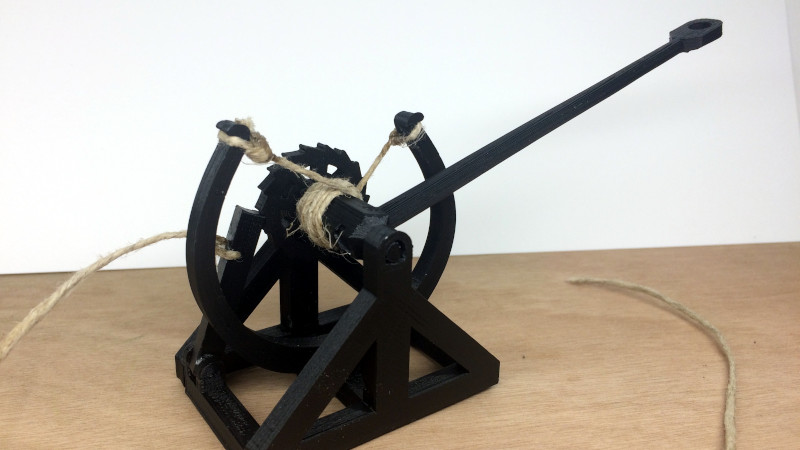


This time, inside a wooden frame that had to be of massive proportions, a single arm was held in a twisted skein of sinew or horsehair. īy the 4th century, its place as a torsion-powered stone-thrower had been taken by the onager, a rather simpler version operating on the same principle. This was confirmed by a reconstructed onager, considerably smaller than the ones described in the sources, that still caused substantial recoil. When it fired, the recoil was so great that it made the onager impossible to place on stone walls because the stones would be dislodged. Īccording to Ammianus Marcellinus, a single-armed onager required eight men to wind down the arm. The arm would then be caught by a padded beam or bed when it could be winched back again. As the sling swung outwards, one end would release, as with a staff-sling, and the projectile would be hurled forward. To fire it, the spoke or arm was forced down, against the tension of twisted ropes or other springs, by a windlass, and then suddenly released. A vertical spoke that passed through a rope bundle fastened to the frame had a cup, bucket, or sling attached which contained a projectile.

doi:10.9737/ onager consisted of a large frame placed on the ground to whose front end a vertical frame of solid timber was rigidly fixed. Http:// History Studies International Journal of History, 10(7), 241-264. History of Catapults - Physics of Catapults. Additionally, according to the ancient Romans, the power and motion of the mangonel catapult mimicked the ferocity of an “onagoras” or “a wild ass,” eventually solidifying the catapult’s full name as the catapult containing the ferocity of wild animals. According to the ancient Roman historian, Ammianus Marcellinus, these devices were also said to yield significantly greater forces of impact than the previously employed bow and torsion-based catapults. Moreover, the mangonel was said to have the capabilities of firing projectiles distances of over 1,000 feet (with a maximum of 1,300 feet), and required less mechanical knowledge to develop, maintain, and operate. The desired launch angle of the projectile could also be adjusted by placing the block arm horizontally closer or farther from the launch arm when placed at its maximum downward position. Consisting of a singular launch and block arm, this machine was designed to be pulled to a desired pitch angle from its naturally perpendicular orientation relative to the ground in order to be released to fire a loaded projectile under the properties of torque and angular acceleration. Developed presumably during the early Roman era from what many believe to be 300 to 400 B.C., the manganon, or the “engine of war,” is what many believe constitutes today’s classification of an ancient catapult.


 0 kommentar(er)
0 kommentar(er)
